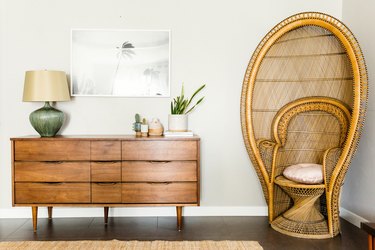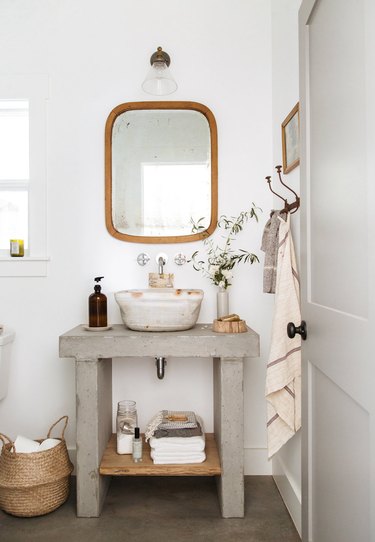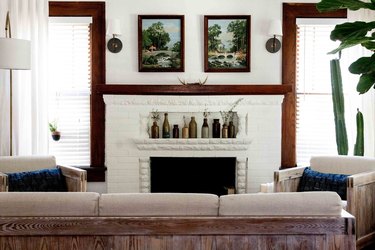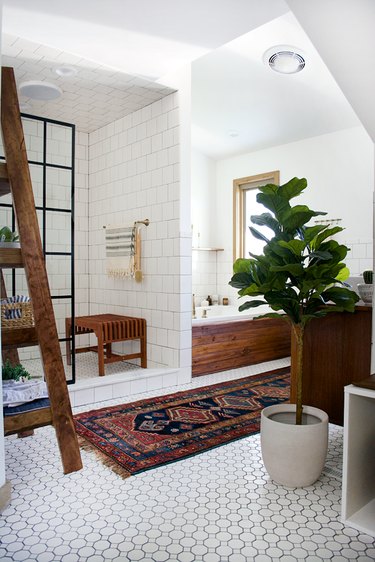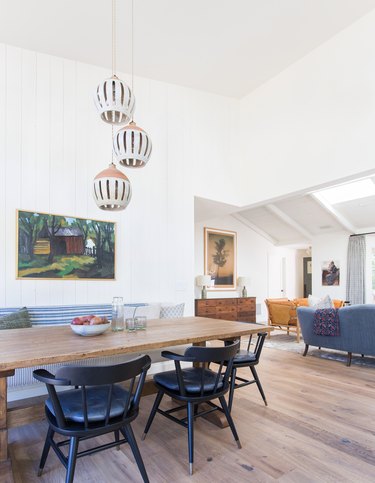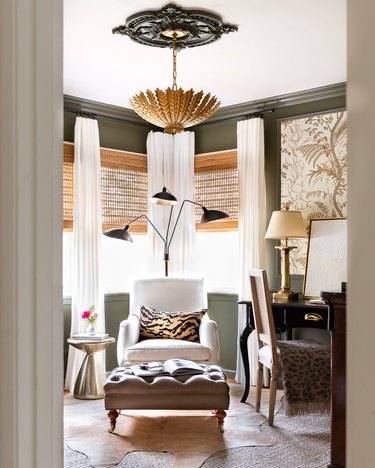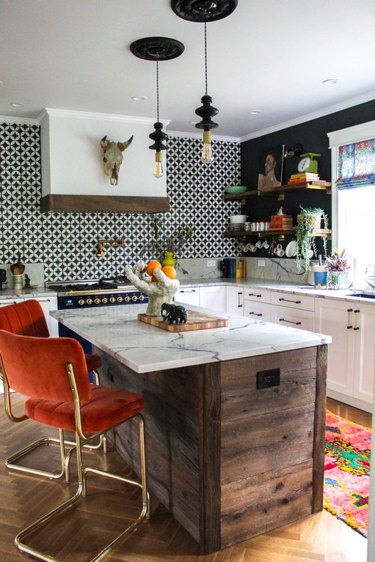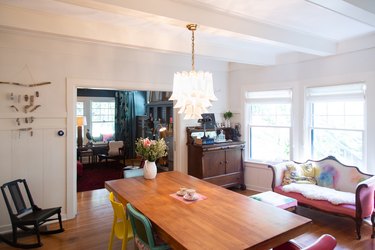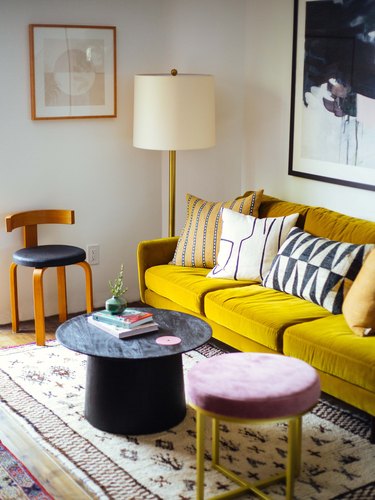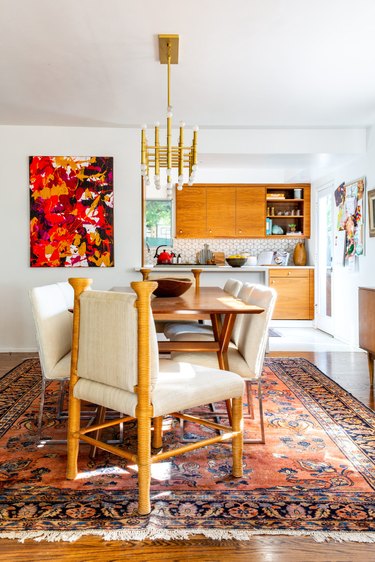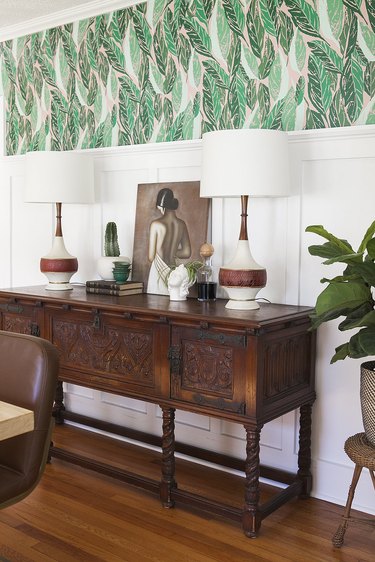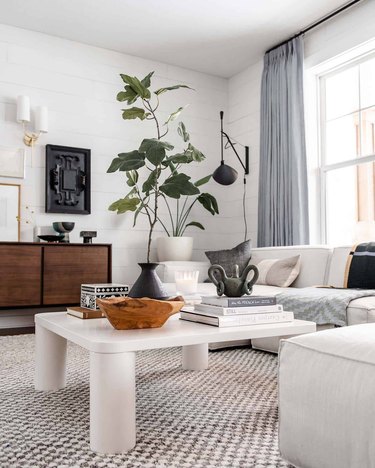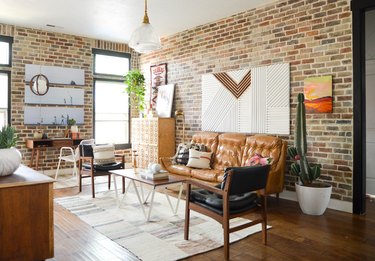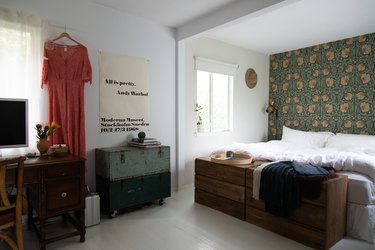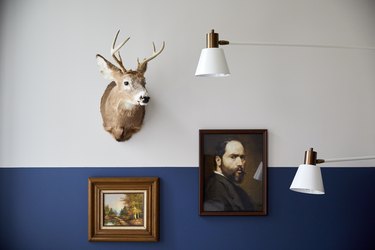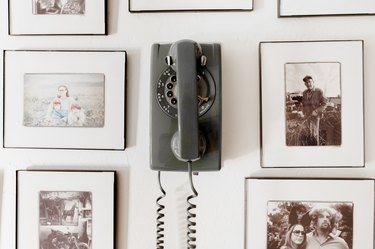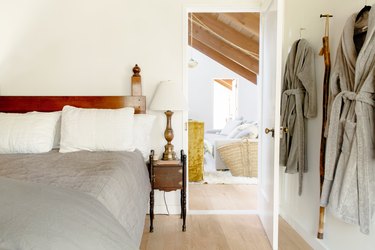More and more, we're seeing vintage treasures co-mingle with modern decorations, creating a look that is completely one-of-a-kind — from geometric ceramics on a midcentury modern shelf to an antique work of art hung alongside framed prints found on Etsy. So, what's the appeal? Why would you mix vintage and modern home decor? For starters, it's a great approach for those who don't want to commit to an all-vintage look that can get antiquated in a hurry. Additionally, it's an ideal solution for homeowners or renters who are drawn to both design styles.
Benefits to Combining Vintage and Modern Furniture and Decor
Video of the Day
There are many benefits to combining vintage and modern pieces, such as flexibility in your decor, a lived-in look that tells a story, an elegance that can only be communicated through antiques, visual beauty, and more. A space filled only with new items may look like everyone else's home, but when you bring in one-off vintage pieces, you inject soul and uniqueness into the room.
Video of the Day
In case you're wondering: Most experts consider an item to be "vintage" if it's at least 40 years old. Antiques tend to be items that are at least 100 years old. And modern in the purest sense is defined as contemporary decor and architecture from the early to mid-20th century. Most people use the term "modern" interchangeably with "current," which means that the 1950s chair in your living room and the brand-new geometric print hanging on your wall could both be thought of as modern.
To help you combine antique and modern looks, here are 15 fresh and inventive ways to show off all of your treasures (both old and new) in the same space.
15 Ways to Mix Modern and Antique Decor
1. Center the room's design around a vintage piece.
You know that feeling — the one when you're walking through a thrift shop and you spot that piece? The vintage table, bar cart, or credenza that's eluded you for years? If it makes your heart go pitter-patter when you see it, take it home and make it the focus of the room. That's what Carrie of Dream Green DIY did with a bar cabinet she scored at an antique market. It looks flawless among modern pieces like a hip DIY wall hanging and a sleek, gold lamp.
2. Embrace natural patina.
In any space, you can choose a combination of modern and visually interesting vintage pieces that carry weathered hues and patinated finishes, as if the room has been lived in for decades. In a small bath belonging to designer Heather Bullard, all of the key elements have a well-loved appearance complete with nicks, rust, and intentional tarnishing.
3. Showcase symmetry.
Symmetry is something that's often seen in modern designs, but it can be applied to your vintage goodies as well. This living room crafted by Emily Netz is perfectly balanced with a lineup of antique bottles gracing the mantel and a pair of framed vintage art pieces hanging above.
4. Weave in antique textiles.
People are loving vintage rugs these days, ones that originate from Turkey, China, and everywhere in between. They always seem to look spot-on in a kitchen or bathroom, which is proven in this spa-worthy sanctuary belonging to Bre from Brepurposed. Those tile floors can be slippery, though, so just be sure to attach a rubber backing or carpet tape to keep your rug in place.
5. Refresh old materials with a coat of paint.
If you move into a home and have original brick walls or a retro fireplace (yay, you!), you can make it come alive (and look a lot more modern) with a fresh coat of paint — white looks especially crisp. Here, Carrie of Dream Green DIY has painted her midcentury fireplace in a bright white shade, which provides the ideal backdrop for eclectic pieces of home decor.
6. Hang vintage light fixtures.
Vintage light fixtures, particularly midcentury designs, usually look right at home in a modern space. You can find these fixtures by scouring local vintage shops (don't forget to check the wiring) or you can purchase vintage-inspired lighting that is brand-new. Hang the fixture over your dining room table like designer Amber Lewis did with these cool, staggered pendant lights.
7. Make vintage artwork the focal point.
When you find a really killer piece of vintage artwork, let it shine to its fullest potential by allowing it to stand on its own without any additional decor around it, something that embodies a modern, minimalist approach. The vintage painting in this bathroom, crafted by interior design guru Emily Henderson, doesn't need any accompanying accents.
8. Play with varying silhouettes.
To create a combination of modern and vintage visuals in your space, keep this in mind: Modern pieces tend to adhere to sharp, clean lines and vintage pieces tend to showcase more curves and rounded edges. Both can be seen in this office belonging to Alisa of A Glass of Bovino, thanks to the modern floor lamp and vintage ottoman and armchair.
9. Be eclectic.
The whole point of mixing vintage and modern decor is to achieve an eclectic look that no one else has in their home. Don't be afraid to experiment with colors, materials, and pieces that seem incredibly different from one another. For instance, in her eye-catching kitchen, Kate from Kate Pearce Vintage masterfully paired a reclaimed wood island, modern pendant lights, and found decor, all coming together for a perfectly eclectic vibe.
10. Amp up the drama.
Start with a couple of grandiose items, like an art deco crystal chandelier and a Louis XV style sofa, as showcased in this dining room. Then layer a few complementary pieces of modern decor on top of that, resulting in a charming setup with a dash of dramatic flair.
11. Incorporate trending hues.
To make a space look current with a hint of bygone times, select furniture that is either authentically old or vintage-inspired in current colors. Dabito of Old Brand New went with a velvet sofa in this space, which feels delightfully retro, but it's showcasing a golden mustard shade that is very on-trend.
12. Allow the dining chairs to shine.
In a vintage-meets-modern dining room, remember that your dining chairs don't all have to be the same. In fact, it's more modern to mix and match, as demonstrated in this space by Annette of A Vintage Splendor. Even the chairs themselves are both modern and vintage, with a combo of vintage rattan and sleek polished chrome.
13. Span across eras.
Another way to make a space look more modern is to bring in vintage pieces from a variety of time periods — sticking to one era will make your space look too literal. But an early 20th-century sideboard, midcentury modern lamps, and a 1920s painting will look oh-so-charming when paired together, a blend that Jessica Brigham achieved in her dining room.
14. Opt for neutrals.
Maybe you want your living space to feel predominantly modern instead of old-school. In that case, anchor the room in neutrals, like grays, whites, and blacks as seen in this space spotted on Emily Henderson. Vintage finds dot the landscape to make the family room look so much more distinctive.
15. It’s all about the furniture.
When you score the antique furniture pieces of your dreams, give them center stage in your space. For example, a library card catalog and vintage leather sofa clearly steal the show in this living room designed by Mandi of Vintage Revivals. The coffee table, on the other hand, is modern as can be, and yet it works flawlessly.
Refurbish Antiques
If you desire a space that looks truly cohesive, you'll likely want your vintage finds to subtly mirror the sleekness of your modern decor. Generally, dingy, dusty, or old-to-the-point-of-falling-apart antiques don't look great alongside clean, modernist furniture.
If that approach appeals to you, you should consider refurbishing your vintage furniture pieces. You can either do it yourself or take them to a professional who specializes in bringing antique furniture back to life.
For a space that feels a bit futuristic and midcentury in nature, you should aim for sleek, glossy finishes for your refurbished furniture. Or, if you don't want to go quite that extreme with finishes, opt for an understated, matte finish instead.
Accent Antiques
In any room, it's always a good idea to start with the larger furniture pieces and build out from there. The same is true of a space that brings together vintage and modern elements.
When browsing antique shops, thrift stores, and online marketplaces, be on the lookout for pieces of home decor that can act as accents alongside your furniture. Pro tip: If you are shopping in-person, use a coffee table or a side table as a platform to group different pieces, such as handmade pottery from the 1970s, midcentury table lamps, stacks of bygone books, and rustic wooden bowls. Together, this will help you visualize the arrangement. If something else catches your eye and would complement your furniture, then go for it. Also, keep in mind that it is easier to remove items from your space than it is to find them, so don't worry about going overboard. You can always edit your space later.
Mix Vintage Styles
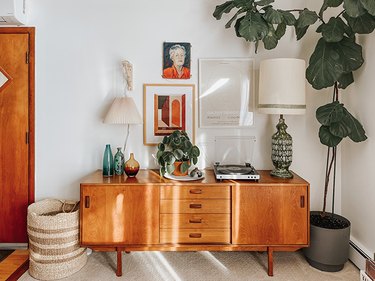
In your vintage-meets-modern space, you should know that you don't have to be tied down to a single era. In fact, you can create a sort of historical contrast by bringing together meaningful pieces from a range of different time periods. For example, a 1950s Hans Wegner chair will look stunning next to a wall punctuated with a Don Freedman tapestry from the 1970s. Similarly, a Sputnik chandelier and a craftsman-style dining table would make quite the pair, too.
Pieces from different decades can cohabitate next to one another peacefully and stylishly. In fact, an assortment of vintage pieces from several decades will showcase your reflective, broad understanding of furniture and its design history. Just make sure you craft a consistent look by staying within similar color families, finishes, or shapes.
Don’t Go Overboard
To prevent your space from looking too curated (i.e. a perfect 50/50 split of antique and modern), when you set out to design a room, decide what style is going to prevail.
For instance, if you want the room to look more modern than vintage, choose modern furniture and pepper the room with vintage finds. Maybe you want your space to look more antique than modern — here, you'll do the opposite — the room should be filled with vintage furniture and small pieces of modern decor.
Look for minor accents that you can easily display like throw pillows, tabletop decor, ceramics, art pieces, and coffee table books.
Stick to Traditional Matching Methods
In any room, not just one styled with both vintage and modern decor, there are a few tricks that can help keep your design looking cohesive. These tried-and-true methods include matching pieces in complementary colors, incorporating furniture and lighting in similar or harmonious finishes, or aiming for comparable textures. For instance, you can emulate a vintage basket's weave with a modern throw pillow or light fixture shade.
Buy What You Love
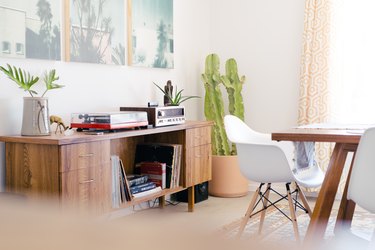
At the end of the day, it's your home, and you have to be happy with the finished result. Whether you choose to keep all these tips in mind, or you decide to go your own way, the most important thing is that your space is an authentic reflection of your personality and your unique tastes. In other words, fill your home with both modern and vintage pieces of decor that you love — even if they don't go perfectly together, each piece will be carefully considered and will mean something to you.
